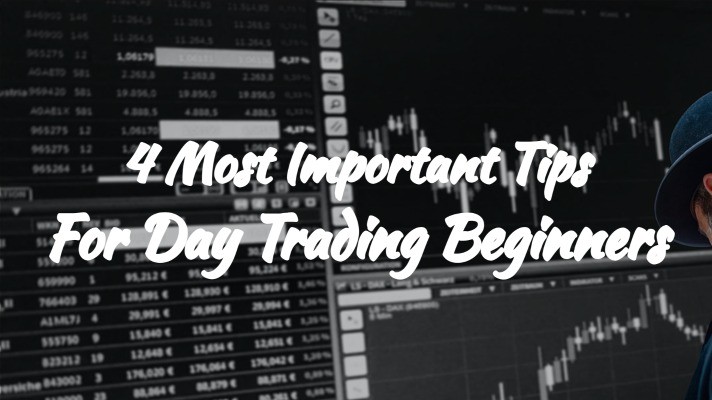Day trading is one of the most exciting ways to play the stock market. What makes it such an interesting pursuit is that it is fast-paced and ever-changing, similar to a high-speed game or sport. Add the fact that it can be highly profitable, and you can see why so many investors are drawn to day trading – for the rush, and for the potential money.
Day trading is defined as engaging in a high volume of short and long trades within a short time frame. The aim is to take advantage of intraday – as in same-day – price movements on stocks. Action in the markets is constant, so getting adept at watching the movements in specific time frames, and then making trades to capitalize on them, is what day trading is all about.
Day Trading – Understanding Time Frames

Time frames are essentially intervals of time. All major trading platforms will offer longer time frames, including:
- Daily
- Weekly
- Monthly
- Yearly
This allows a trader to follow trends over a particular stretch of time, in order to make decisions on when to move on a stock – either buy or sell.
Day trading requires shorter time frames. The capability has evolved with the advent of near-instant dissemination of news, and the introduction of online trading platforms. Real-time changes are now tracked by the minute, making trading under much shorter time frames and intraday trading possible.
Pros and Cons – the Best Time Frames for Day Trading
Right off the top, it should be stressed that day trading is risky. Any type of trading comes with inherent risks – i.e. losing your money. But day trading amplifies the risk factors. All the moves you make are at an accelerated pace, versus the traditional “buy and hang on” strategy in investing.
With day trading, you have to be prepared to lose. That means not investing more than you are financially able to withstand. It also requires in-depth knowledge of the markets you’re trading in. It takes time to learn.
Explore Best Time Frames for Day Trading
Easy Tips – How to Choose the Best Time Frame for Day Trading
Let’s have a look at 4 common time frames and the positives and negatives of each:
60-Minute Time Frame
A 60-minute time frame is often combined with others, a strategy known as multiple time frame analysis. Monitoring a 60-minute chart allows the trader to watch trends while at the same time jumping on opportunities identified through shorter time frame windows. It’s important to note that the standard trading day begins at 9:30 am and ends at 4:00 pm – this only gives a half-hour for the final time frame starting at 3:30 pm.
Swing traders, who aim to take advantage of gains over the short to medium term, over days or weeks, often use a 60-minute frame for analysis purposes.
15-Minute Time Frame
For traders watching many stocks during the course of a trading day, the 15-minute time frame is a popular, if not the most popular choice. The challenge becomes how many stocks to keep on your watch list, in order to keep up with and analyze the various movements. Too many symbols on your screens, all at the same time, and you stand a very real chance of missing trade opportunities.
5-Minute Time Frame
The 5-minute time frame is typically used by traders focusing on only one or two volatile stocks. The idea is to use the stock candle – the price chart displaying the high, low, opening, and closing price – within the time frame, to make decisions on trades. Candles typically form every five minutes, so this time frame becomes a logical fit.
1-Minute Time Frame
This time frame requires specific expertise and sharp mental reflexes. Constant attention must be paid to the movement of prices. Trade signals that appear require quick analysis and action to be successful. A low in a 1-minute window may be an opportunity for a buy at a lower level risk, and higher potential for a gain. Traders who use the 1-minute time frame exclusively are called scalpers – the name implying that through this type of rapid trading, small incremental profits over many trades result in a substantial profit.
Multi-Time Frame Analysis
Traders sometimes combine the use of different time frames to aid in their decision-making. One strategy is to work off a longer time frame, to a lower one, in order to identify new entries that show profit potential. Combining analysis through the use of different time frames can help spot opportunities at very specific times in a short time frame, for example, juxtaposed against the general trend of a longer time frame.
Tick Charts and Renko Charts
Other options for stock movement analysis include these two well-known charts.
Tick Charts illustrate price activity on an intraday basis. A new bar shows up on the chart upon a certain number of ticks or trades. They are interval charts based on data, rather than a set time period. This set number of transactions displayed on the chart is designed to assist in decision-making for a trader.
Renko Charts display price changes, measuring and plotting them using bricks, as opposed to candlesticks. Proponents say they are superior in that they allow traders to focus on trends rather than minor price bumps, allowing for more accurate data for decision making.
Summary – the Ups and Downs of Day Trading
Day trading is a practice with significant risks. The American Securities and Exchange Commission (SEC) has made a point of outlining the potential drawbacks, which include:
- Financial loss, especially in the first few months of engaging in day trading. It’s documented that many day traders never achieve profitability for this reason – they simply run out of funds before making any money.
- Day trading is expensive and stressful. It requires constant concentration, analysis and monitoring of charts and trends. Expenses include commissions to firms, training, and computer equipment.
Getting into day trading requires prior knowledge of the markets, along with the ability to tolerate risk and acknowledge the possibility of losses. It also requires large amounts of time and dedication to monitoring and analysis, along with a mindset that removes emotion and stays cool under pressure.







